Pride and Prejudice (1940) and Sense and Sensibility (1995)
Chick Flick à la Austen
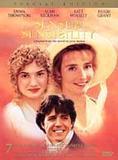 I was in seventh heaven- Two of my favourite Jane Austen novels in one evening on the TVOntario Saturday Night at the Movies. I could not help but be delighted by viewing that old chestnut from 1940, “Pride and Prejudice” with Greer Garson and Laurence Olivier. It was followed by Emma Thompson’s 1995 version of “Sense and Sensibility”. My husband, although he bravely soldiered on through part of the twin bill feature, was not similarly enthusiastic. I was too engrossed in my cinematic voyage to the early part of the 19th century to really notice his waning interest level.
I was in seventh heaven- Two of my favourite Jane Austen novels in one evening on the TVOntario Saturday Night at the Movies. I could not help but be delighted by viewing that old chestnut from 1940, “Pride and Prejudice” with Greer Garson and Laurence Olivier. It was followed by Emma Thompson’s 1995 version of “Sense and Sensibility”. My husband, although he bravely soldiered on through part of the twin bill feature, was not similarly enthusiastic. I was too engrossed in my cinematic voyage to the early part of the 19th century to really notice his waning interest level.
I was enraptured by it all: the scintillating dialogue, the droll comedy, the engaging romance, the period costumes (even if the costumes for "Pride & Prejudice" were from the wrong period in the first film!) – it was all too wonderful. Yes, some of it was just too wonderful to be true. Oh well. Even if the movies were either not true to the period or not representative of the original novels, they still managed to be true to something of the heart of Jane Austen’s stories. Some of us were too carried away to notice the discrepancies anyways.
My favourite version by far of an on-screen version of “Pride of Prejudice” is the 1995 BBC mini-series production with Jennifer Ehle and Colin Firth. That production allowed for a much more leisurely examination of the material from the original novel, being less constrained by the two hour time frame of the Hollywood feature film. The 1940 version did, of course, take certain liberties in order squeeze the Austen story into the ridiculously tight bodice of the feature film, thus showing off certain native attributes of the original book.
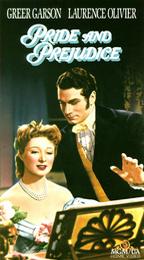 During the “Interviews”, Elsa Solendar, an expert in all things Austen, remarked that in this film version of “Pride and Prejudice”, characters as well as plot have been changed beyond recognition. The most prominent example of this kind of alteration is the penultimate scene of the film. Mr. Darcy treads hard on the heels of his aunt, the Lady Catherine de Bourgh to propose marriage to a most pleasantly surprised Lizzie. As Solendar pointed out, in this 1940s version, the transformation of Lady Catherine into a “grand old gal” giving her belated blessing to the union of the young couple had more to do with the wartime political relations between America and Great Britain than it did with any original intent that Jane Austen may have had in mind in her novel.
During the “Interviews”, Elsa Solendar, an expert in all things Austen, remarked that in this film version of “Pride and Prejudice”, characters as well as plot have been changed beyond recognition. The most prominent example of this kind of alteration is the penultimate scene of the film. Mr. Darcy treads hard on the heels of his aunt, the Lady Catherine de Bourgh to propose marriage to a most pleasantly surprised Lizzie. As Solendar pointed out, in this 1940s version, the transformation of Lady Catherine into a “grand old gal” giving her belated blessing to the union of the young couple had more to do with the wartime political relations between America and Great Britain than it did with any original intent that Jane Austen may have had in mind in her novel.
I found the whole proposal scene between the lovely Miss Greer and Laurence Olivier to be rather stilted and inauthentic. As the couple decides to go out to the garden for a private conference, Olivier, not quite knowing what to do with his white gloves at this point, tosses them to one side. The gesture is in itself utterly charming, entirely appropriate to the film’s action and quintessentially Olivier. It is a scene that works very well in the context of this film. However, Austen’s Mr. Darcy would not and could not have acted in this way at this stage in his relationship with Miss Bennet. It is not Olivier the actor who is stilted. Even the best of actors cannot very well act on what is simply not there in the script.
We may like the ending of the 1940s film well enough. We may even find it highly entertaining. Nonetheless, I can’t help but think that we are getting the short end of the stick when compared with the rich texture and emotional complexity of the original Austen story. But then, what can one expect when one invests a mere two hours in front of a screen versus the rewards of the much more demanding journey of reading the whole novel? I guess the old adage is true: “You gets what you pays for.”
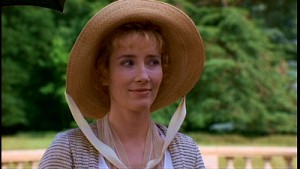 Perhaps Emma Thompson’s screenplay for “Sense and Sensibility” does not suffer from the same problems as the much earlier screenplay of “Pride and Prejudice” written by the eminent Aldous Huxley. Emma Thompson not only does a fine job of providing the script for the movie; she does double duty as a leading lady for the film adaptation. This is quite a talented woman; certainly no passive wallflower.
Perhaps Emma Thompson’s screenplay for “Sense and Sensibility” does not suffer from the same problems as the much earlier screenplay of “Pride and Prejudice” written by the eminent Aldous Huxley. Emma Thompson not only does a fine job of providing the script for the movie; she does double duty as a leading lady for the film adaptation. This is quite a talented woman; certainly no passive wallflower.
The drive and determination that it must have taken for Emma Thompson to undertake such an enterprise betrays how much things have changed for women in the modern era. Unlike her character in the film (Elinor Dashwood) who essentially sits around waiting for the men in her sphere to take action , Emma Thompson shows a great deal of sense and sensibility as well as a good bit of gumption in writing this script and then playing the part of the somewhat stifled elder sister.
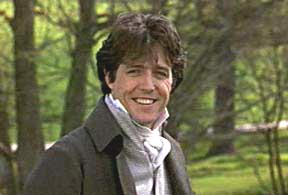 Hugh Grant as the bumbling suitor of the first sister, Mr. Edward Ferrars, is affable enough. Greg Wise as Marianne’s love interest, Willoughby , is dashing enough. Alan Rickman, as the rather mysterious man in the background, is surprisingly suitable enough maintain our interest. While it is true that these men seem to disappear off to London with amazing frequency and equally amazingly little explanation, we are very glad to see them reappear on the screen. It livens things up.
Hugh Grant as the bumbling suitor of the first sister, Mr. Edward Ferrars, is affable enough. Greg Wise as Marianne’s love interest, Willoughby , is dashing enough. Alan Rickman, as the rather mysterious man in the background, is surprisingly suitable enough maintain our interest. While it is true that these men seem to disappear off to London with amazing frequency and equally amazingly little explanation, we are very glad to see them reappear on the screen. It livens things up.
How frightfully boring it must have been for gentlewomen in those days, sitting around in dreary parlours toiling over useless sewing projects, arranging and rearranging the flowers, reading a limited selection of books and talking endlessly to one’s relatives. Finding a good match in marriage and becoming involved in others’ matrimonial goings on was practically the only event of consequence in such a woman’s life.
Circumstances, attitudes and opportunities for the modern young woman may have changed vastly over the years. However, the need to find a good and suitable match for a lifetime partner has not changed. Having been a confidante in affairs of the heart for more than one young woman of this generation, I can vouch for the fact that things are not necessarily less complicated for today’s young ladies. Problems and impediments of all types do arise. Sometimes there is a glorious happy ending and a blissful union and sometimes there is heartbreak and confusion.
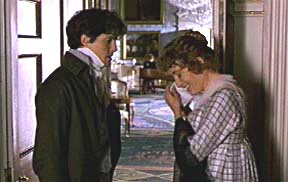 Elsa Solendar in the “Interviews” points out that the revolutionary thing in its day for a Jane Austen novel was that the heroine made perhaps the most important decision of her life for herself. It was a decision made ultimately without the collusion of relatives or by the pressures of society. At the end of the day it was a matter decided largely as a function of the character of the individuals involved. The decision showed what kind of character each participant possessed, for good or for ill.
Elsa Solendar in the “Interviews” points out that the revolutionary thing in its day for a Jane Austen novel was that the heroine made perhaps the most important decision of her life for herself. It was a decision made ultimately without the collusion of relatives or by the pressures of society. At the end of the day it was a matter decided largely as a function of the character of the individuals involved. The decision showed what kind of character each participant possessed, for good or for ill.
Austen’s novel is fashioned in such a way that both Elinor and Marianne demonstrate growth in character. In spite of the limitations that women of their class and their day were offered, Austen shows that it is possible to reveal strength of mind and of character. And good character is always in fashion, no matter what the hemlines or bodice brocades may be like in a particular year.
Guys Night In next week on TVO: "The Guns of Navarone" and "The Dam Busters"
Suggested Reading:
- Don’t you just hate it! Classic romance novel ruined by a farting horse. IMDb trivia for Sense and Sensibility.
- Good sense in an age of sensuality – Real Love or Infatuation?
- Antiquated social practices and the modern miss: courtship
- Jane Austen an old maid? On staying single when everyone’s getting married




Reader Comments (1)